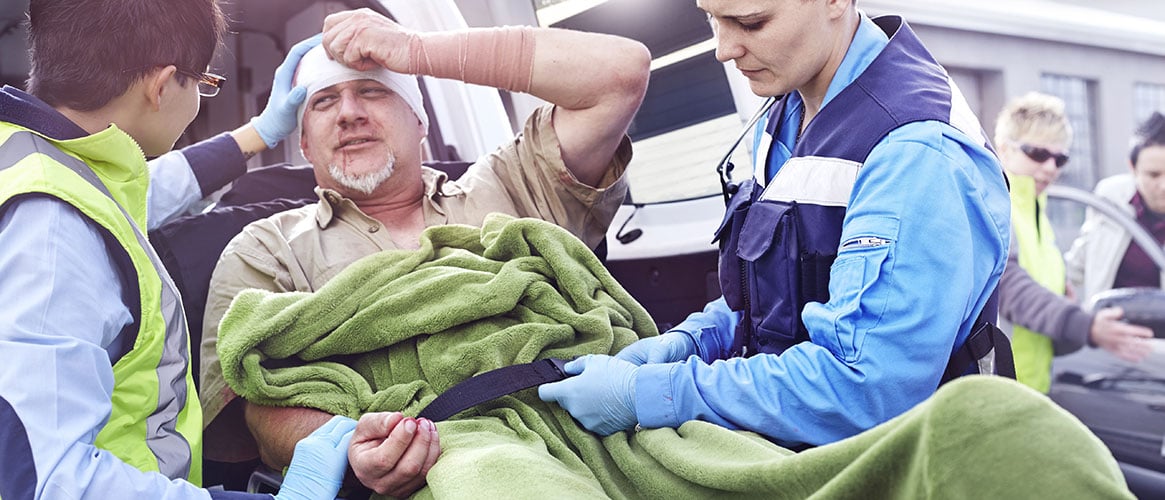Emergency medical technicians (EMTs) provide 24-hour, seven-day-a-week emergency medical service to the public in all kinds of weather. Acting as part of a fire department, ambulance service, or medical facility, EMTs handle medical transports and respond to emergencies such as fires, accidents, traumas, and psychiatric/drug crises. A variety of job tasks under extreme circumstances demands that EMTs work safely.
Providing basic and advanced life support services may expose you to patient blood and bodily fluids.
This increases the risk of bloodborne diseases such as Hepatitis B or HIV. Know what a blood exposure is—a splash of blood to a mucous membrane (eye, nose, mouth) or an open cut/wound. Blood on intact skin is not an exposure and can be washed off. If you do get exposed, flush the area, report the incident, and get medical treatment immediately, when it is most effective.
Protect yourself while helping others. Wear appropriate personal protective equipment (PPE) for the job you are doing. Long sleeves/pants protect your skin while gloves protect your hands. Safety goggles and a face shield prevent a splash of blood to the eyes, nose, or mouth. Cover open wounds and sores while at work. Wash your hands frequently and before you eat, drink, or smoke. Decontaminate work surfaces and tools after each response and/or transport.
Driving to an emergency can be your most dangerous job task. Wear your seatbelt. Practice defensive driving by scanning the road ahead for obstacles and other drivers. Do not assume that drivers will get out of your way, despite the flashing lights and sirens. Avoid distractions on the road. Keep one person dedicated to driving and enough personnel in the back of the rig to handle patient needs.
Irregular hours and shifts, life or death situations, and witnessing human suffering can impact your emotions and stress.
Potential violence from psychiatric, criminal, and drugged patients is stressful. Rescuers using and wearing heavy safety equipment take a physical toll. Prepare your body and mind for this work by maintaining a healthy lifestyle with proper rest, diet, and exercise. Schedule sleep and nap periods around your shifts. Get counseling for ongoing stress, and after large-scale or difficult responses.
Extricating and accessing patients in emergency situations is strenuous work. Attending to patient’s medical needs requires kneeling, bending, and lifting. When kneeling, place your knee on a pad. Keep the supply kit close to you to avoid twisting between medical supplies and the patient. Even in an emergency situation, do not rush a lift. Prepare and plan it, then lift with a straight back and your head facing forward. Use backboards, team lifting techniques, and mechanical lift equipment when available.
Medical emergencies call for quick action, but take the time to size up the situation before you respond. Look for and remove hazards before you respond. Do not enter an area without the proper safety equipment. Failure to heed your own safety may prevent you from providing life-saving support to the patient.
